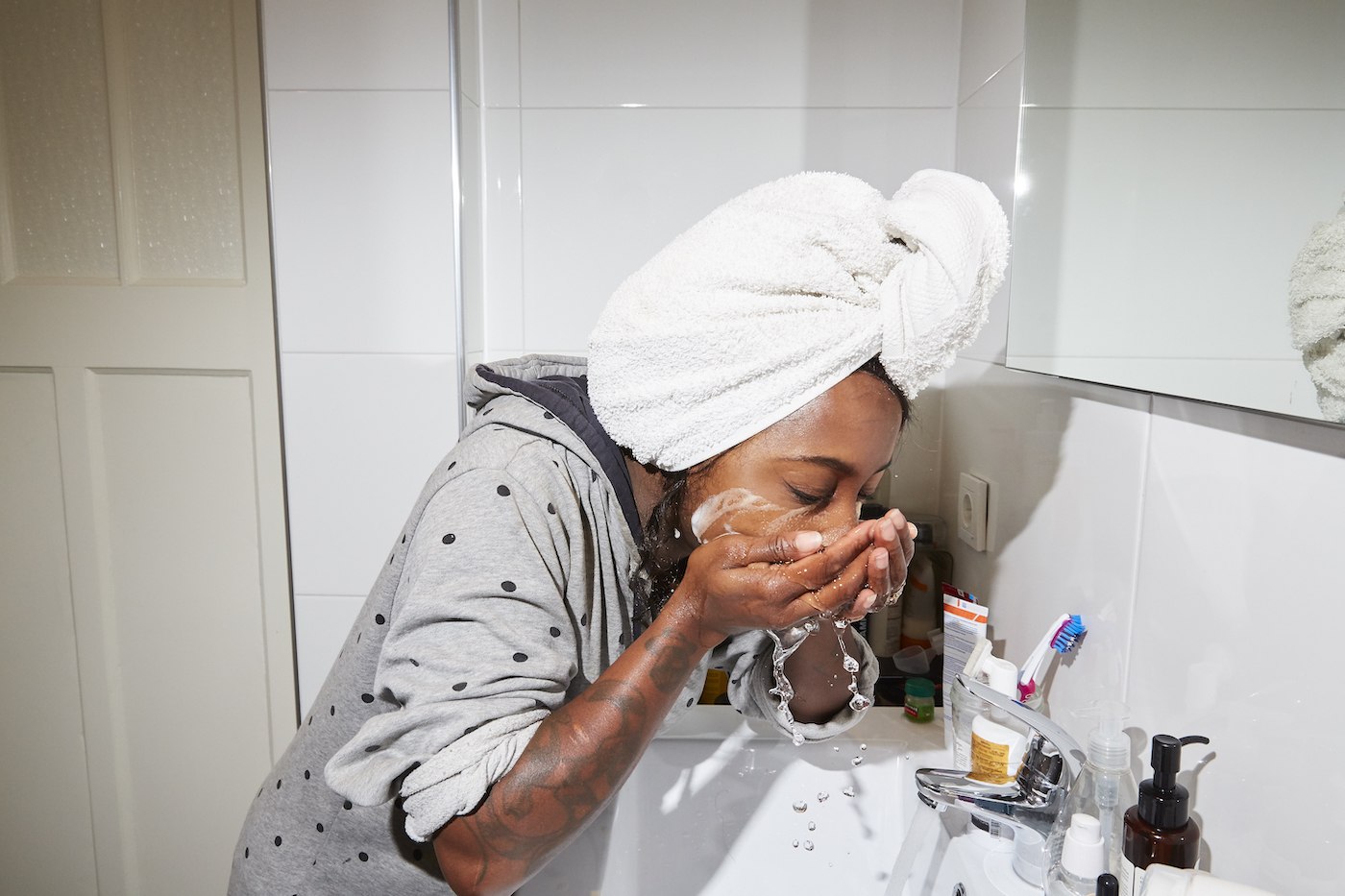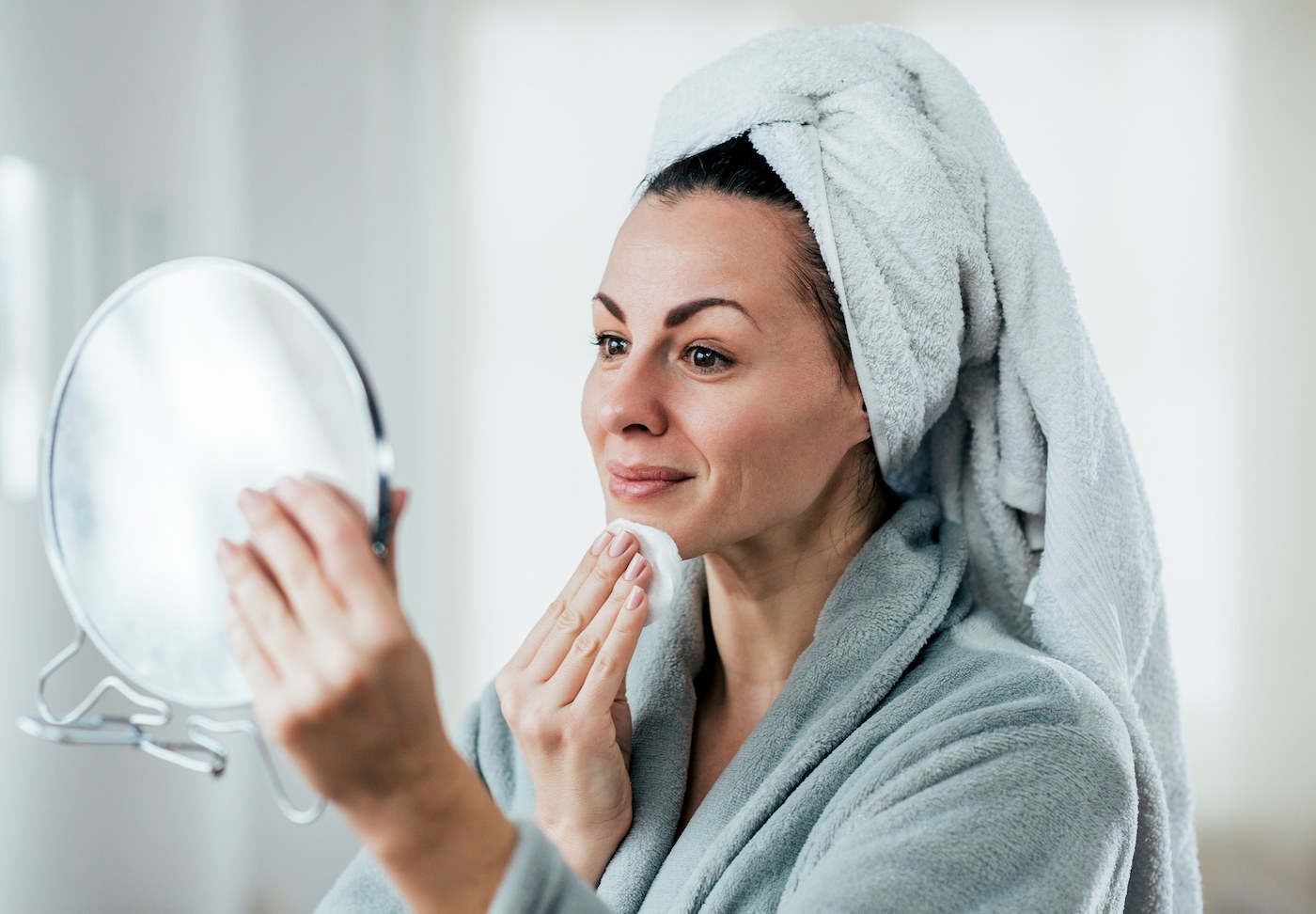
September 25, 2019 at 03:00PM by CWC
From drugstore aisles to dermatologist’s offices, one cleanser has withstood the test of time: Cetaphil Gentle Skin Cleanser ($6). The seemingly simple formulation has racked up 41 (count them: 41!) beauty awards industry-wide, countless name-checks from celebs, and more dermatologist recommendations than we’d care to count. But with only eight ingredients—a surprisingly minimal number—and zero “actives,” what’s behind the glowing reviews?
Honestly, it’s smack dab on the label: The stuff is gentle. What we need from a cleanser isn’t to treat hyperpigmentation or target redness. We simply just to get skin clean enough so that the products that follow it can do their jobs properly, according to Tiffany J. Libby, MD, a board-certified dermatologist and assistant professor of dermatology at Brown University. After all, the formula gets moved around your complexion and then washed down the drain in a matter of seconds.
That’s why Cetaphil’s formula is so simple. It contains a surfactant or cleansing agent, preservatives, and often times, a humectant or moisture-retaining agent, so that skin doesn’t get parched (and TBH, it doesn’t have much else for good reason). “At the end of the day, sometimes less is more,” says Matthew Meckfessel, who works on the research and development team at Galderma, the company behind Cetaphil. “You don’t necessarily need 8,000 ingredients to have a benefit. To have the bare minimum, in itself, is a benefit—especially for those patients who have sensitive skin.”
As with all cleansers, the star of Cetaphil’s “bare minimum” show is a surfactant. In this case, that’s an ingredient called sodium lauryl sulfate, which is usually also behind your cleanser’s ability to foam up at the sink (it’s in loads of stuff from laundry detergent to toothpaste, too). “In order for a cleanser to be effective, it needs to use compounds that can bind to dirt and oil, as well as water, so that when you rinse away that cleanser, it’s actually going to rinse away the oil with it,” Meckfessel tells me. “Otherwise, you’re just kind of splashing water on your face–you’re not really cleansing it.”
There’s been a lot of buzz about SLS because, sometimes when it’s used in certain amped-up formulas, it can be harsh on skin and leave complexions a little dried out; however, Cetaphil is different because it uses the ingredient at low levels. You can tell this is true because despite SLS’s reputation as a foaming agent, the cleanser doesn’t lather when mixed with water, and it won’t strip your skin.
ADVERTISEMENT
ADVERTISEMENTKate Spade Autumn/Winter Sale |
As for the other seven ingredients that make up this beauty shelf mainstay, there’s a humectant and an emollient, which help keep skin hydrated; water, which helps keep the formula in liquid form; and three preservatives in the form of parabens (which, FWIW, adhere to EU standards—which are stricter than U.S. standards—for the maximum percentage these ingredients can appear in a product). Admittedly, for those with strictly 100 percent clean beauty countertops, that might be a deal-breaker, but as a reminder, if a beauty product contains water, it needs to have a preservative so that it doesn’t grow cultures. Moldy beauty products can also adversely affect the health of your skin (and this is especially important if you’re stashing your face wash in the shower, where a hot and steamy environment breeds bacteria).
My personal introduction to Cetaphil (who among us doesn’t have a version of this story?) came when I was 15. My dermatologist had prescribed me Retin-A, and sent me home with dozens of samples of Cetaphil, promising that it would be gentle enough to keep my skin calm while the Retin-A fought off my acne. Thirteen years later, it seems people are still recommended the same fail-safe treatment for their faces. “I love Cetaphil’s formulation and how well tolerated it is by my patients, who are often undergoing other topical treatments for their skin and need gentle, yet effective products that reliably will not cause irritation or further dryness,” says Dr. Libby, adding that Cetaphil’s cleanser is fragrance free, non-comedogenic, and hypoallergenic, all of which are important for those dealing with skin issues.
According to Macfessel, this is no accident. “It’s the genesis for the whole platform to be geared to the most sensitive-skin patients, and by virtue, that really halos out to be appropriate for anyone and everyone,” he says of the formula. “Lots of these ingredients are new and cool, but sometimes they don’t necessarily have the data behind them or they don’t have the history of use to show that they’re going to be safe or effective—they might be irritating.” It’s worth noting that Cetaphil has been around for 70-plus years, and has a history of being safe and effective. No small feat, indeed.
Many derms will tell you that it doesn’t matter if you spend $8 on your cleanser or $800. In this case, all you need is $6 and eight ingredients for one that works. For whatever skin type, concern, or situation you may be dealing with.
Here are the other drugstore products derms don’t go a day without recommending. Plus, what happened when I swapped my pricey skin-care routine for one that cost less than $200.
Author Zoe Weiner | Well and Good
Selected by CWC
ADVERTISEMENT
ADVERTISEMENTUp to 30% off Gift Sets |






